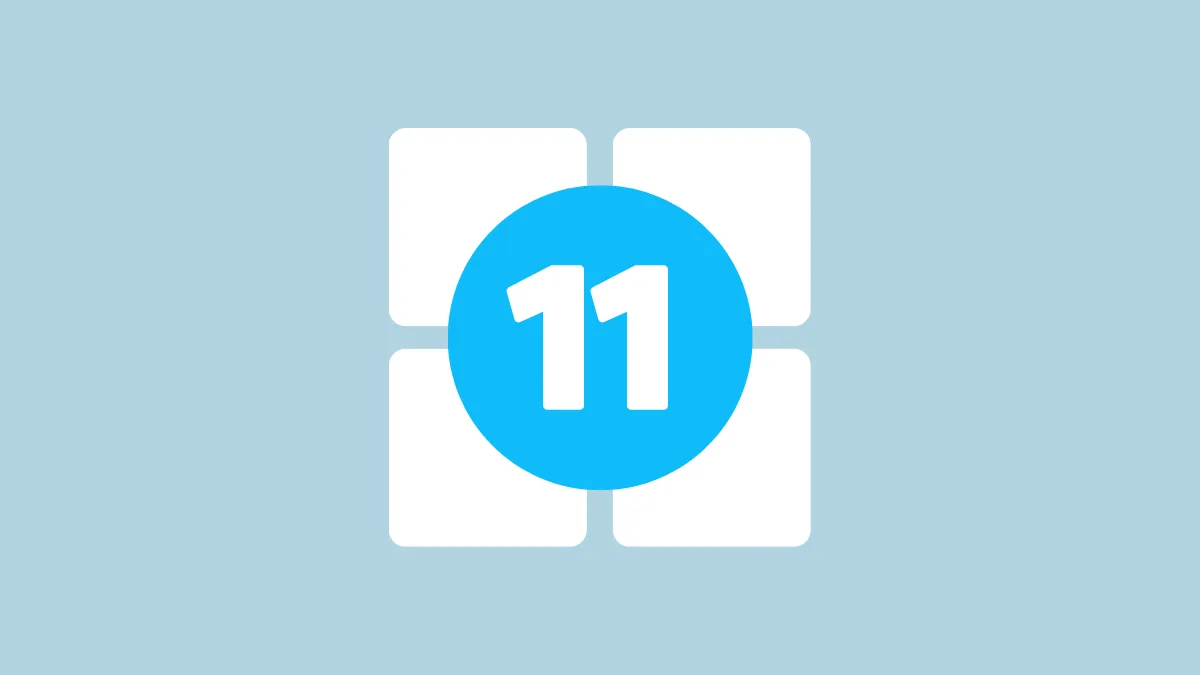Performing a clean installation of Windows 11 can resolve persistent system issues, enhance performance, and provide a fresh start for your PC. Whether you're troubleshooting frequent crashes, combating malware infections, or preparing your device for a new owner, reinstalling Windows 11 ensures your system is in optimal condition. This guide will walk you through various methods to clean install Windows 11, along with steps to back up your data to prevent any loss.
Prepare your PC for a clean installation of Windows 11
Before initiating a clean installation, it's crucial to back up your important data to avoid any potential loss. This section outlines how to create backups of your entire system and personal files using different methods.
Create a backup
Creating a recent backup ensures that you can recover your data if anything goes wrong during the installation process. Here are some ways to back up your system and files:
Backup entire system:
If you want to preserve your current Windows installation for future use, creating a system image is the optimal choice. A system image is a complete snapshot of your hard drive, including the operating system, programs, files, and settings. It allows you to restore your computer to a previous state in case of system failure or corruption.
You can create a system image using the built-in Backup and Restore feature in Windows. Here's how:
Step 1: Click the Start button, type File History, and select the 'File History' Control Panel option.
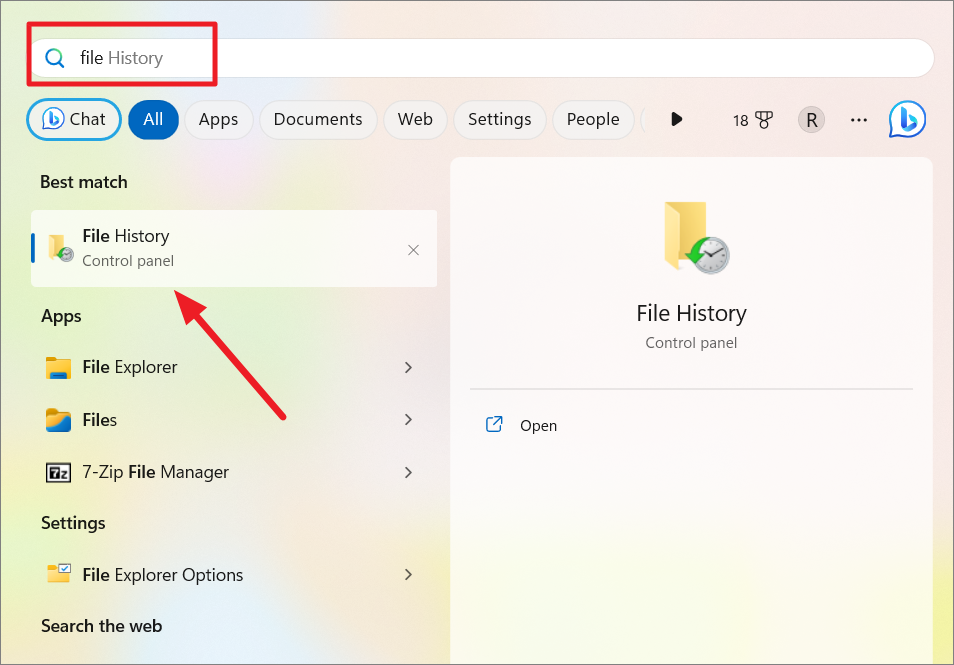
Step 2: In the Control Panel, click on 'System Image Backup' located at the bottom-left corner.
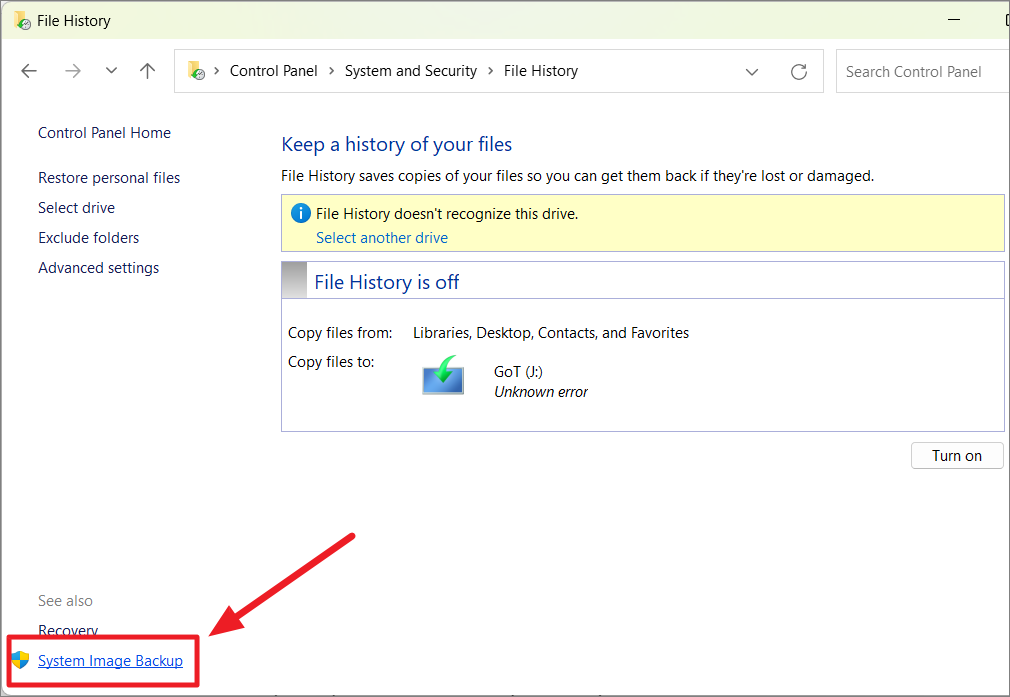
Step 3: In the Backup and Restore (Windows 7) window, select 'Create a system image' from the left pane.

Step 4: Choose where you want to save the backup. You can select a hard drive, DVDs, or a network location. If you choose a hard drive, specify which drives to include in the system image.
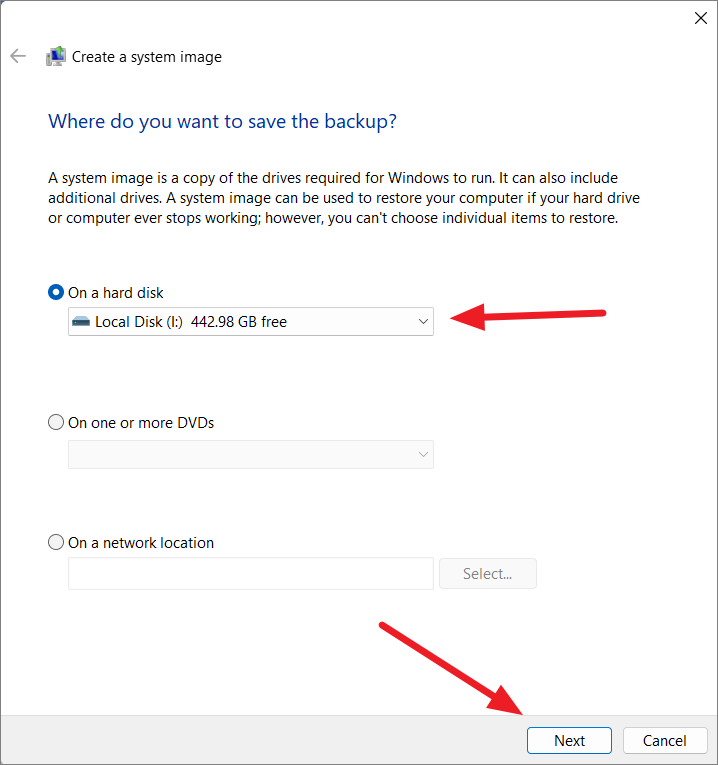
Step 5: By default, the system drive, Windows Recovery Environment, and EFI partition are selected. Click 'Next' to proceed.
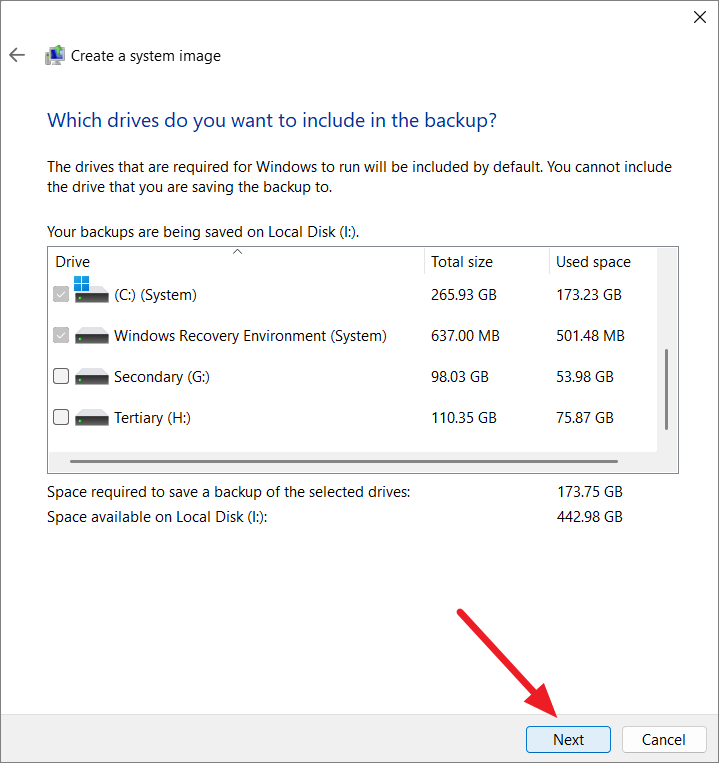
Step 6: Click 'Start backup' to initiate the process.
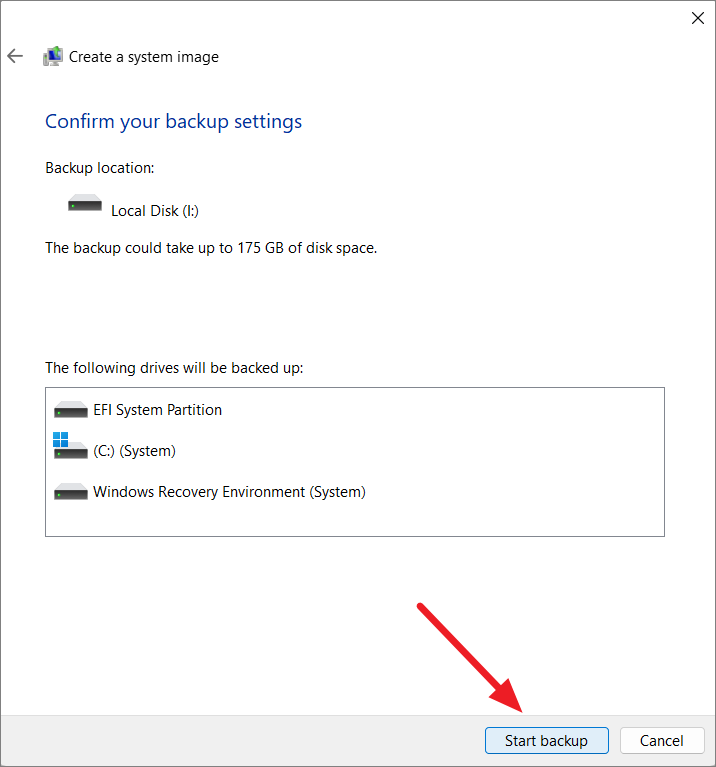
Once the backup is complete, your entire system is safely stored and can be restored if needed.
Backup files to OneDrive:
Uploading your important documents and files to OneDrive ensures they are securely stored in the cloud. Here's how to configure OneDrive backup:
Step 1: Click the 'OneDrive (cloud)' icon in the system tray.

Step 2: Click the 'Settings' menu (three dots) at the top-right corner and select 'Settings'.
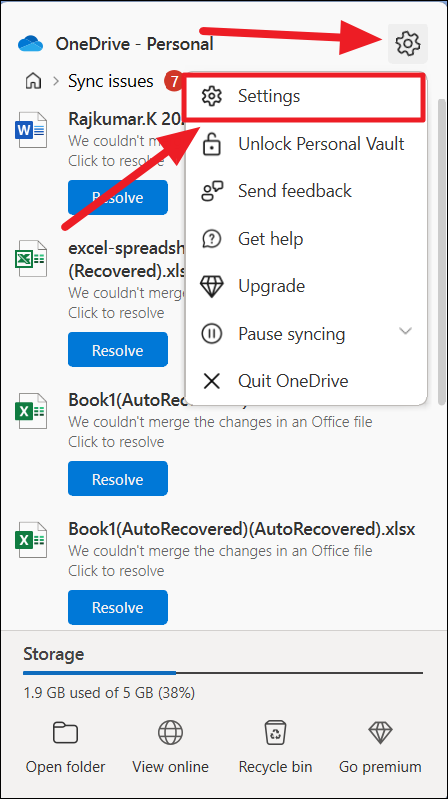
Step 3: Navigate to the 'Sync and backup' tab, then click 'Manage backup' on the right.

Step 4: Toggle on the switches for the folders you want to back up, such as 'Desktop', 'Documents', 'Pictures', 'Music', and 'Videos'.

OneDrive will now automatically back up these folders to the cloud and sync them across your devices.
Backup files to external storage:
If you have a large volume of files, it's advisable to copy them to an external USB drive. Here's how to manually back up your files:
Step 1: Connect an external drive with enough storage to your computer.
Step 2: Open File Explorer and type %HOMEPATH% in the address bar to access your user profile directory.
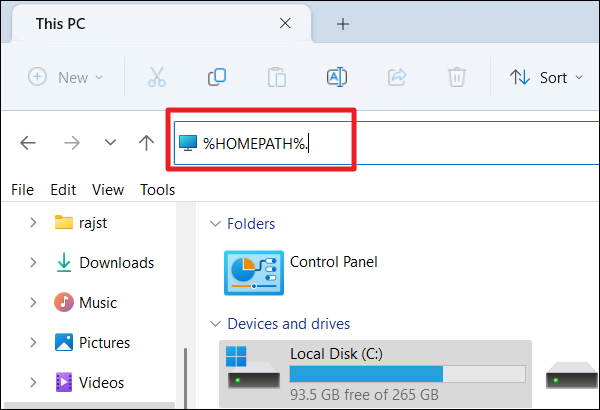
Step 3: Press Ctrl + A to select all folders, or manually select the ones you wish to back up.
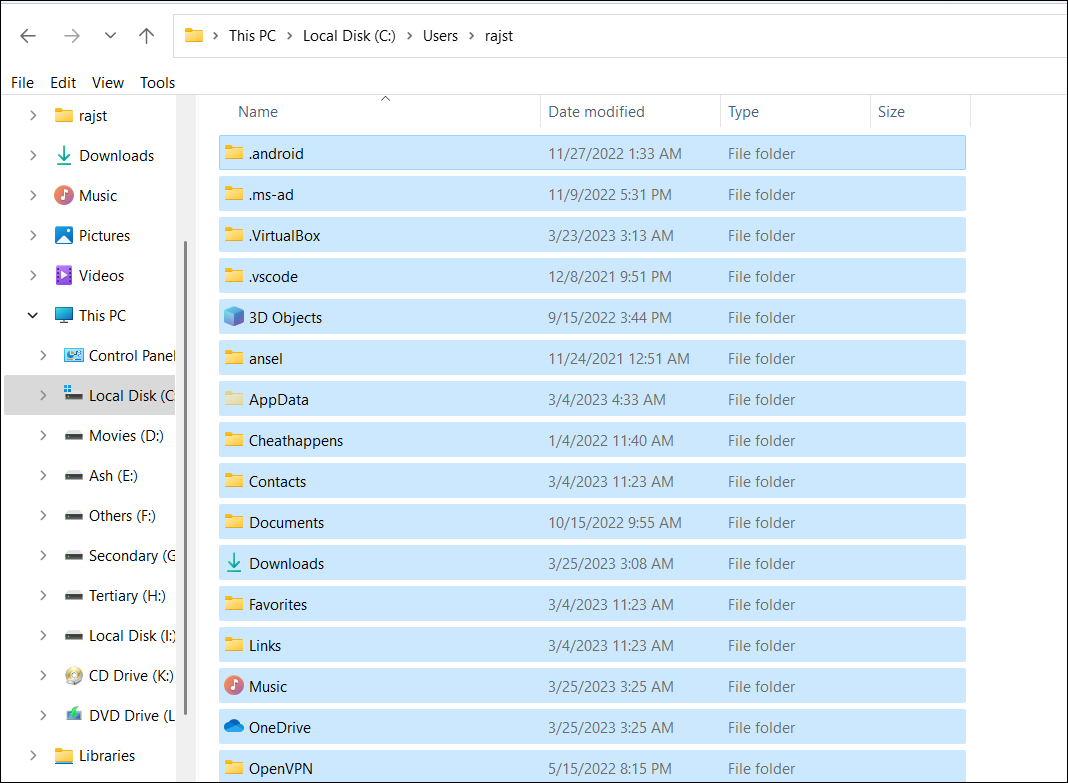
Step 4: Right-click the selected folders and choose 'Copy'.

Step 5: Navigate to your external drive, right-click on an empty space, and select 'Paste' to copy your files over.
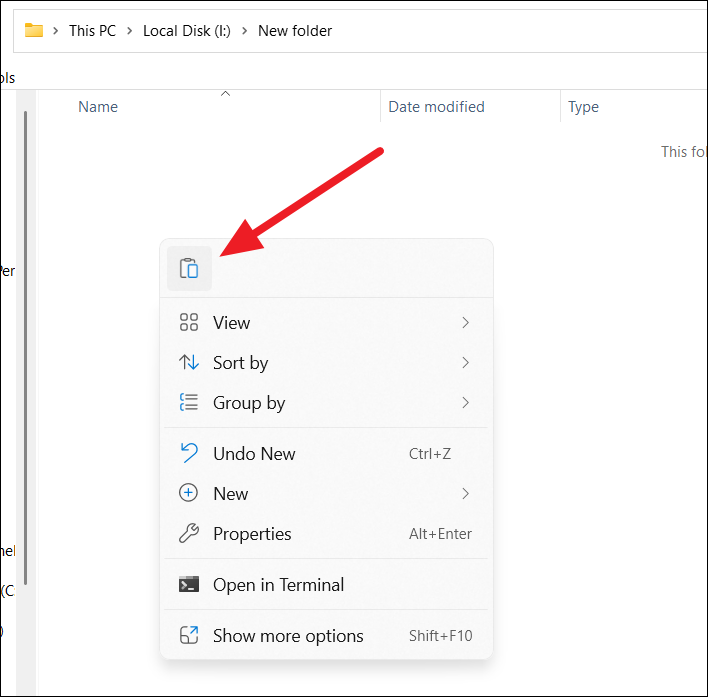
Repeat these steps for any additional user accounts on your PC to ensure all important data is backed up.
Create a list of installed programs
Documenting your installed programs and their product keys (if applicable) helps you reestablish your work environment after the clean installation. Make a list of all applications you use regularly.
With your data safely backed up and a list of programs at hand, you're ready to proceed with the clean installation of Windows 11.
Clean install Windows 11 by resetting the PC from Windows Settings
Resetting your Windows 11 PC reinstalls the operating system, providing a fresh start. You can remove all personal files, apps, and settings for a complete clean installation. Here's how to reset your PC using Windows Settings:
Step 1: Click the 'Start' button and select 'Settings' to open the Settings app.
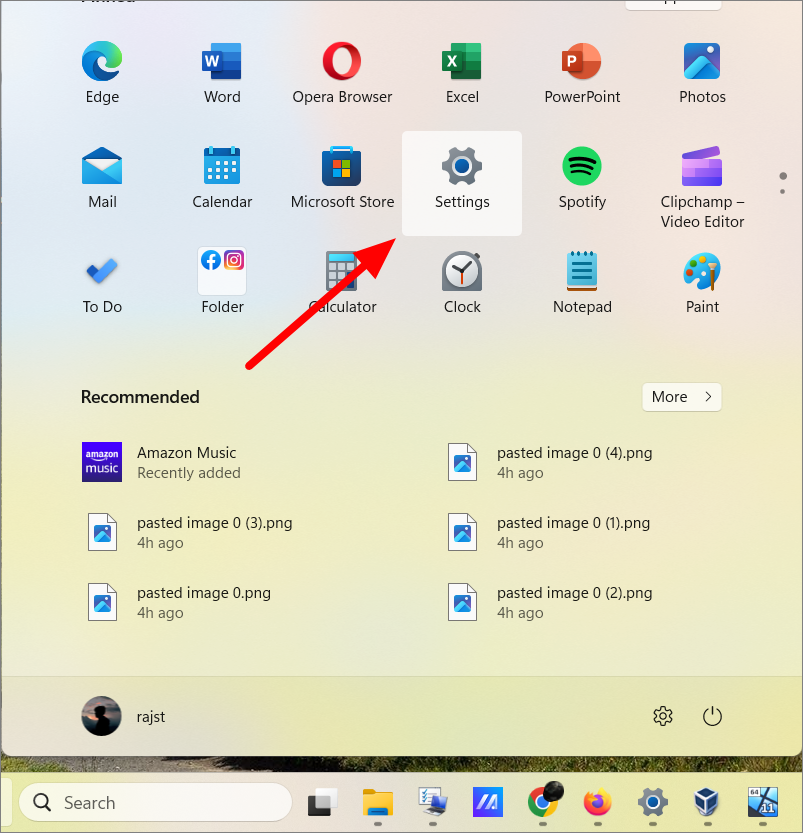
Step 2: In the Settings app, select 'System' from the left pane, scroll down, and click on 'Recovery' on the right.

Step 3: Under 'Recovery options', click the 'Reset PC' button next to 'Reset this PC'.

Step 4: A window will appear with two options. Choose 'Remove everything' to erase all personal files, apps, and settings.

Step 5: Select how you would like to reinstall Windows:
- Cloud download: Downloads a fresh copy of Windows 11 from Microsoft's servers (requires an internet connection and approximately 4 GB of data).
- Local reinstall: Reinstalls Windows from the files on your device (may not resolve issues caused by corrupted system files).
Choosing 'Cloud download' is recommended for a clean and updated installation.

Step 6: Click 'Change settings' to adjust additional options.
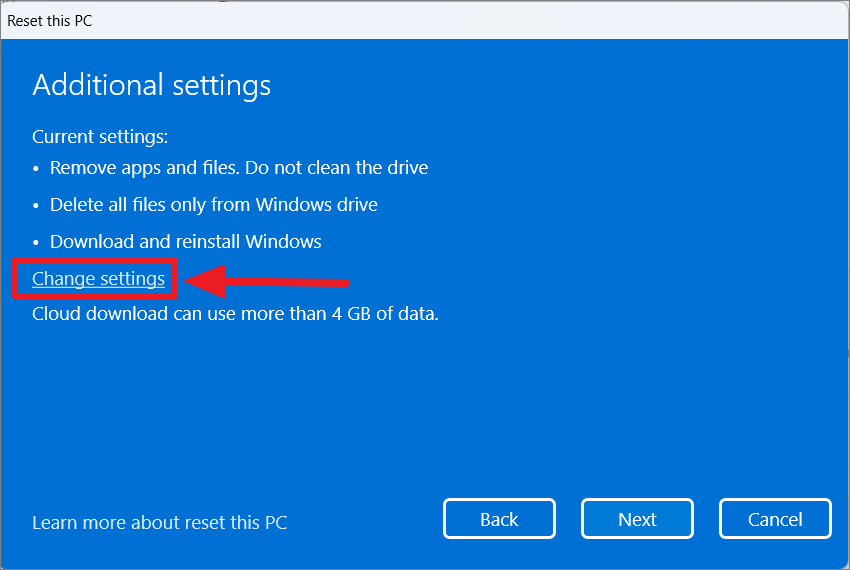
Step 7: In the settings, you can choose to:
- Enable 'Clean data' to thoroughly erase your drive (recommended if you're disposing of or selling your PC).
- Turn on 'Delete files from all drives' if you have multiple drives and want to erase everything.
- Enable or disable 'Download Windows' depending on your previous selection.
Adjust the settings as needed and click 'Confirm'.
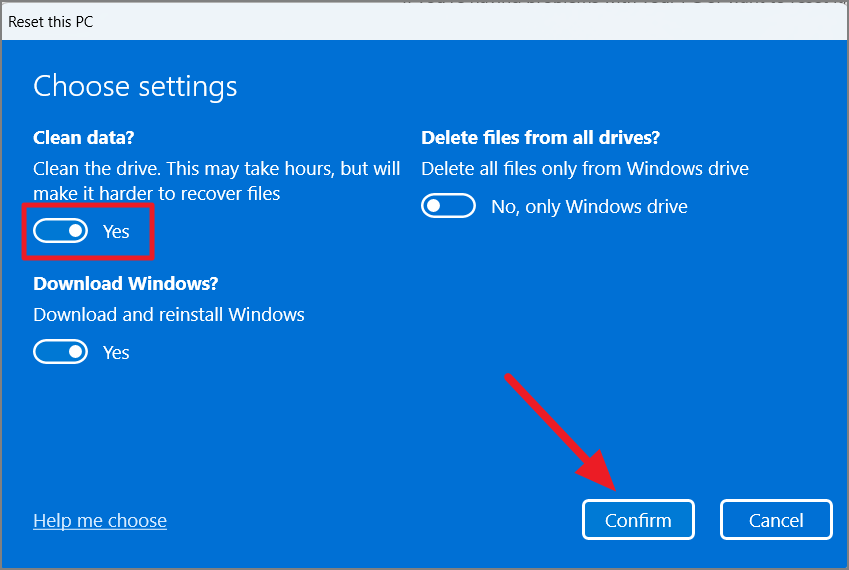
Step 8: Click 'Next' to continue.
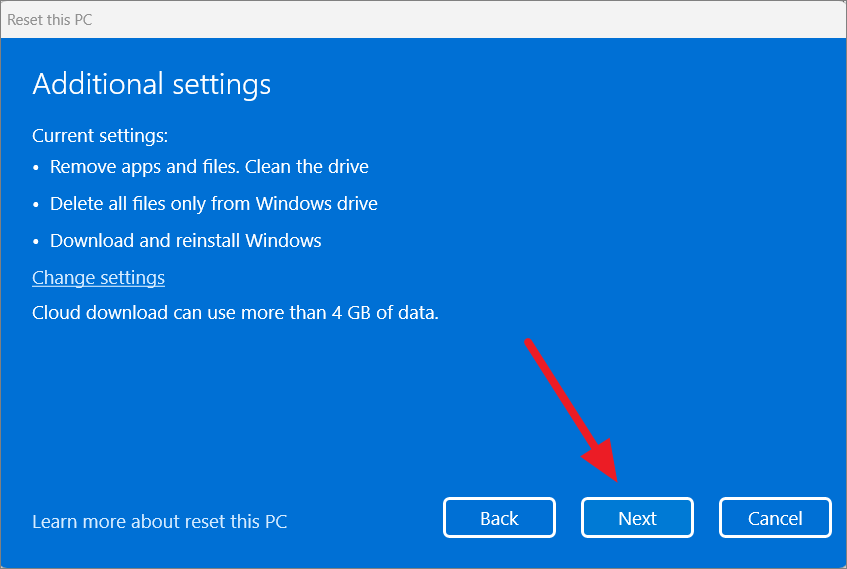
Step 9: If prompted about recent updates not being removed, click 'Next' to proceed.
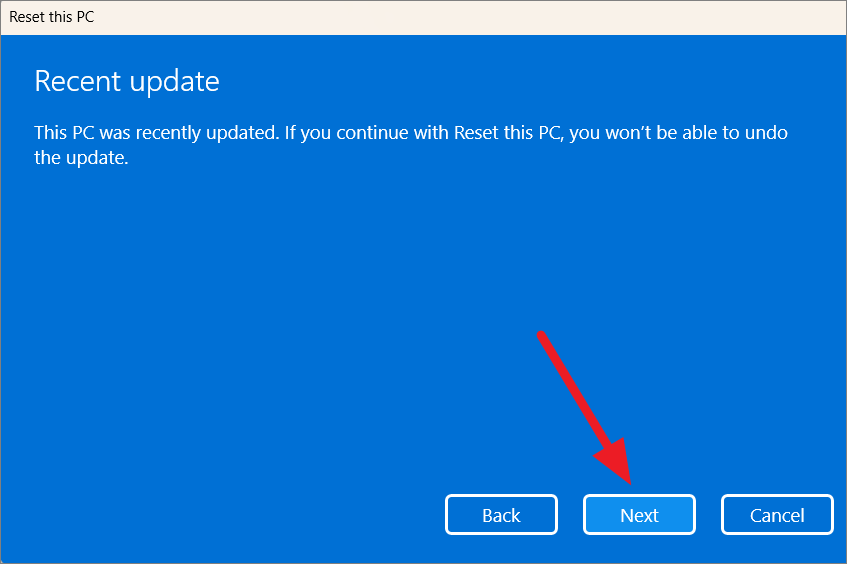
Step 10: Click 'Reset' to start the clean installation process.
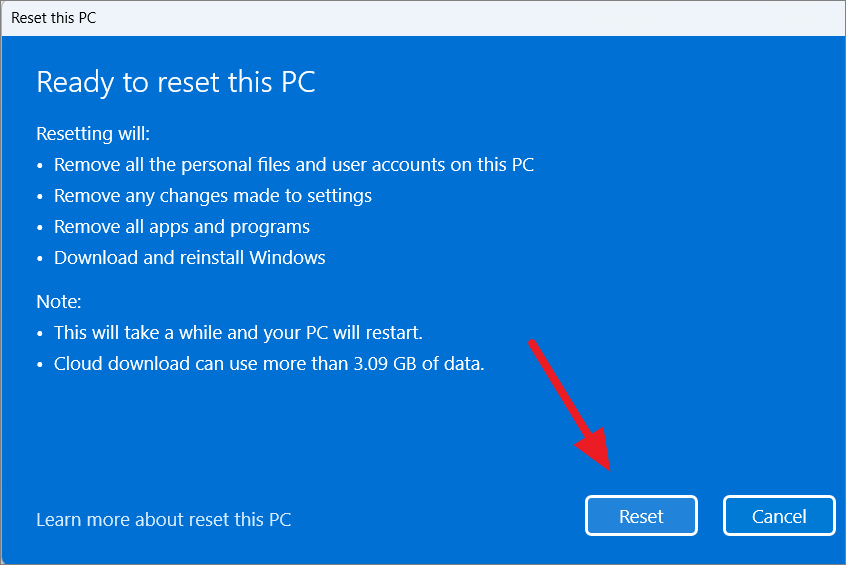
Your PC will restart and begin reinstalling Windows 11. This process may take some time and will involve several restarts.

Out-of-the-box Experience (OOBE) configuration
After the installation, you'll need to complete the initial setup to configure your settings. Here's how:
Step 1: Select your country or region and click 'Yes'.
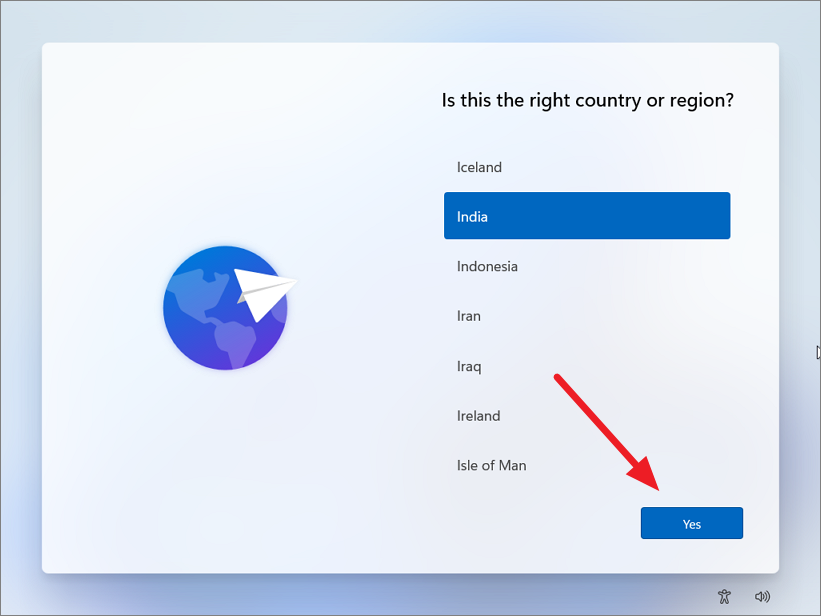
Step 2: Choose your keyboard layout and click 'Yes'.
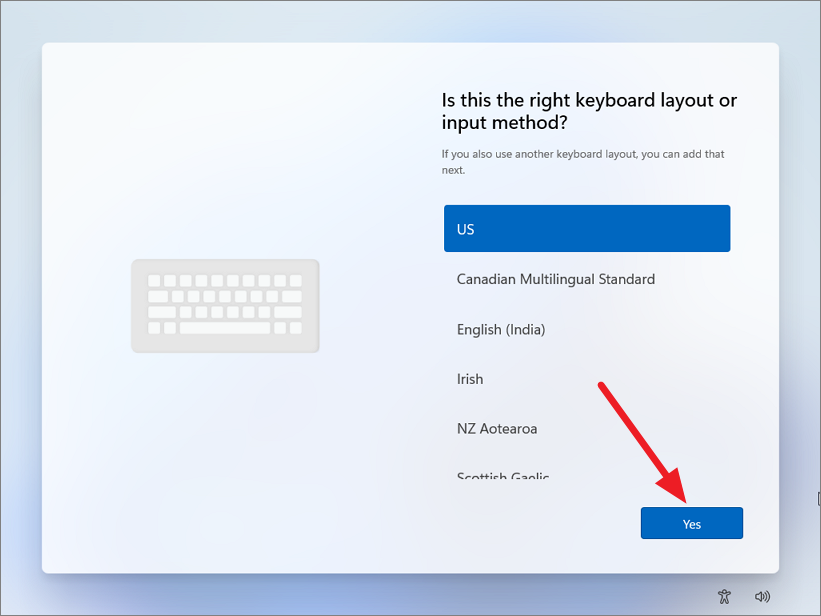
Step 3: If you don't need a second keyboard layout, click 'Skip'.
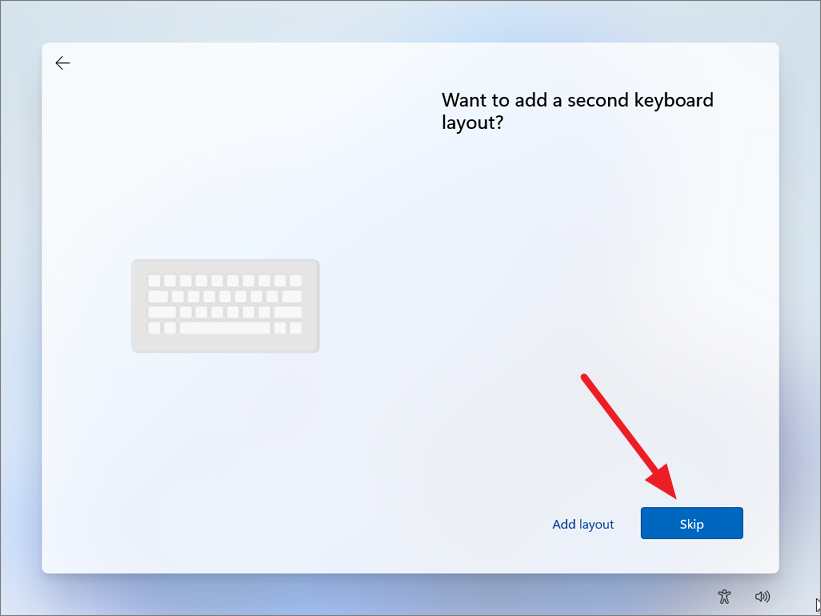
Step 4: Windows will check for updates. Once completed, enter a name for your PC and click 'Next'.

Step 5: Connect to your Wi-Fi network if prompted. If using Ethernet, the connection is automatic.
Step 6: For Windows 11 Pro, choose 'Set up for personal use' or 'Set up for work or school' based on your needs. Windows 11 Home users will proceed automatically.
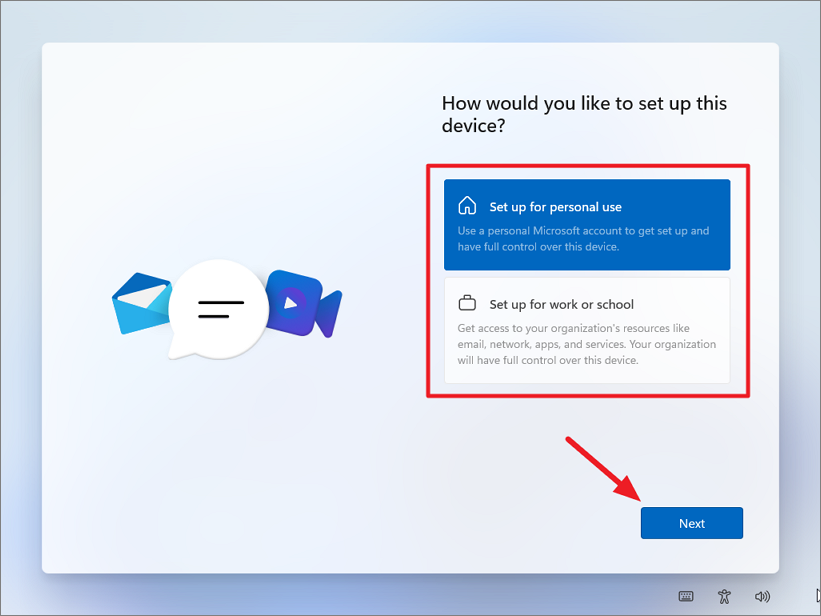
Step 7: Click 'Sign in' and enter your Microsoft account credentials to link your account to the device.

Step 8: After verification, click 'Next' to continue.
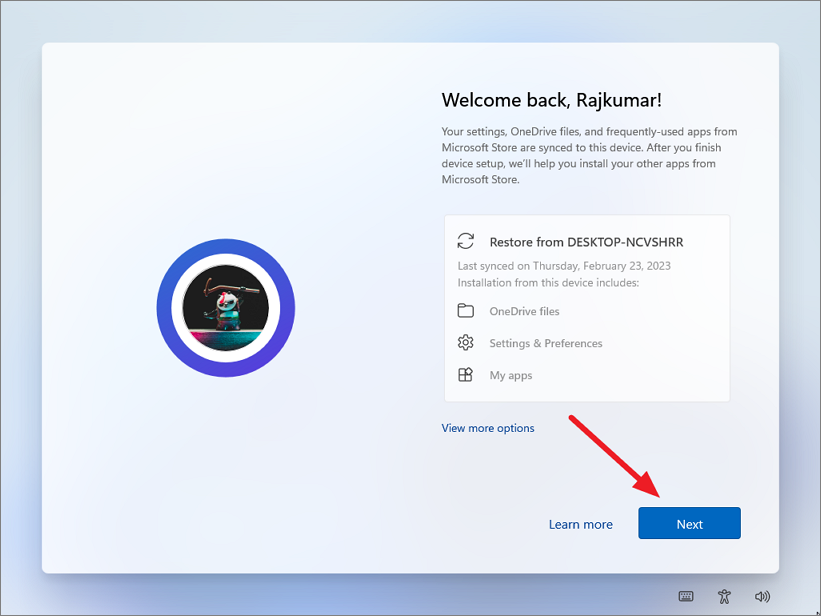
Step 9: Decide whether to restore from a previous backup or set up as a new device. For a clean start, select 'Set up as new device' and click 'Next'.
Note:

Step 10: Create a PIN for quick sign-in to your device.
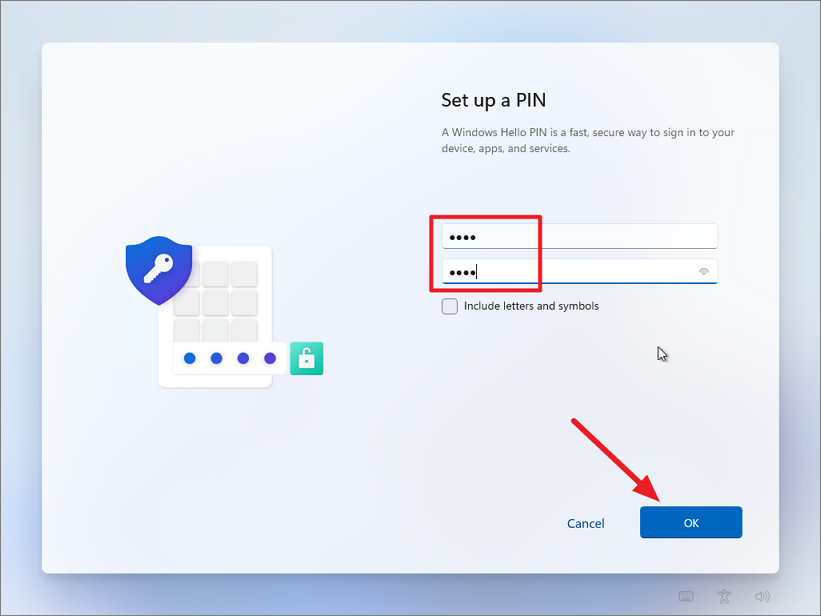
Step 11: Review and adjust your privacy settings as desired.
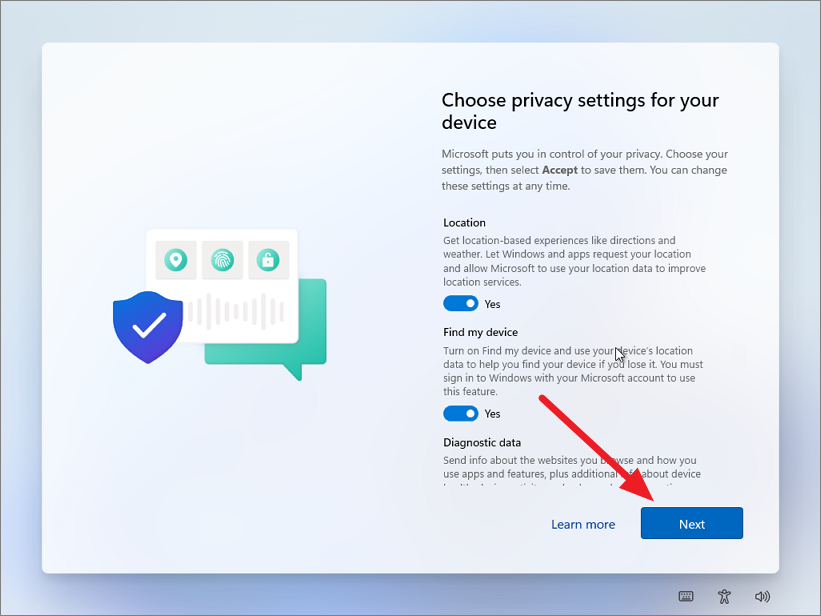
Step 12: Select the primary use for your device to receive personalized tips and recommendations. Click 'Accept' to proceed.

Step 13: If you wish to link your Android phone to your PC, scan the QR code provided. To skip this step, click 'Skip'.

Step 14: If prompted with offers for Microsoft 365 or OneDrive, click 'Skip' or 'Decline' to continue. Windows will finalize your settings.

Reset Windows 11 via Recovery Mode
If you're unable to access Windows Settings or sign in to your account, you can reset your PC using Recovery Mode. This method allows you to reinstall Windows 11 without needing to boot into the system. Follow these steps:
Step 1: Turn on your computer and reach the sign-in screen. Click the power icon at the bottom right, hold down the Shift key, and select 'Restart'. This will boot your PC into the Windows Recovery Environment (WinRE).

Step 2: In WinRE, click on 'Troubleshoot'.
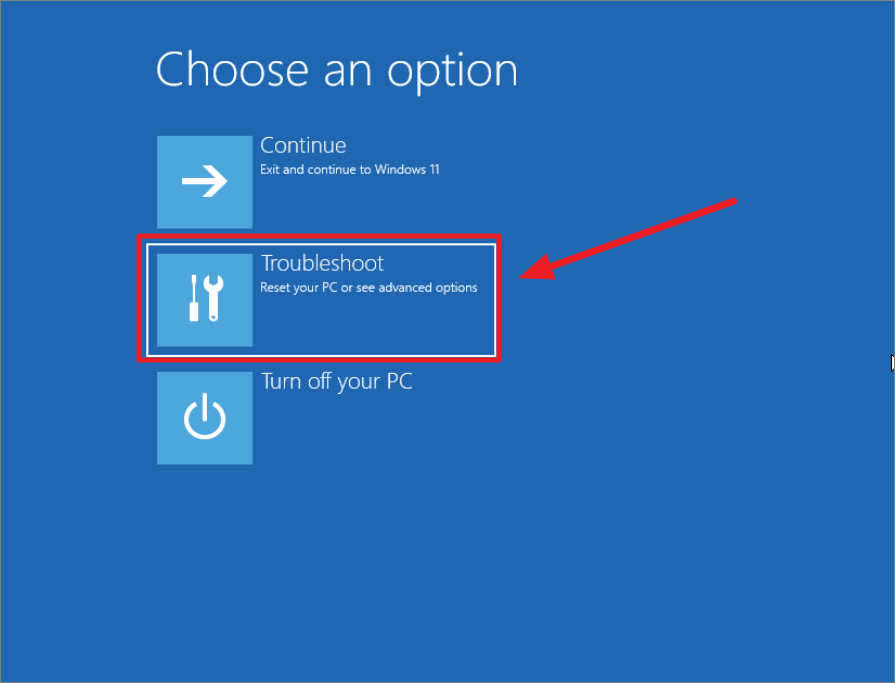
Step 3: Select 'Reset this PC'.
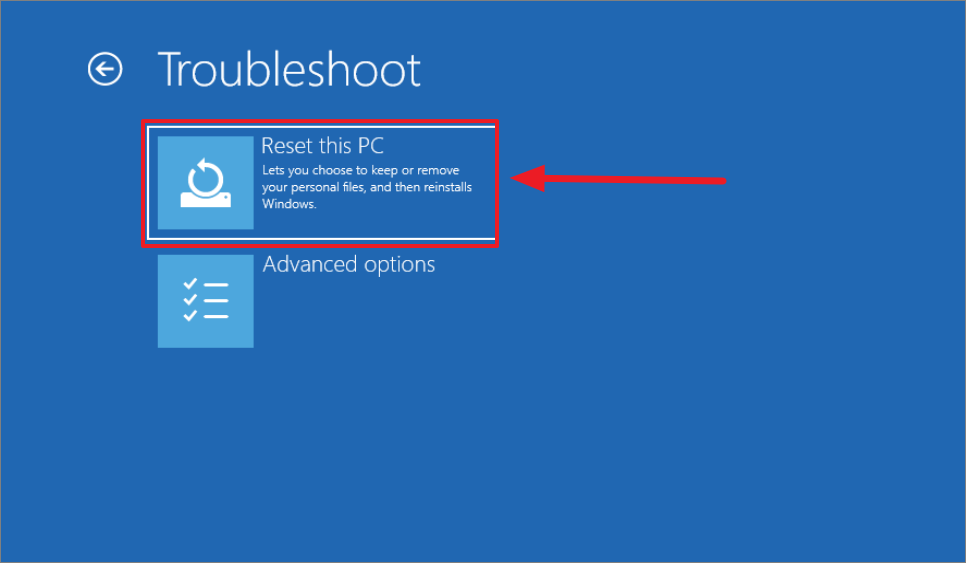
Step 4: Choose 'Remove everything' to perform a clean installation.

Step 5: Decide how you want to reinstall Windows:
- Cloud download: Downloads a fresh copy of Windows 11 from Microsoft's servers.
- Local reinstall: Reinstalls Windows from the existing system files on your PC.
It's recommended to choose 'Cloud download' for the most up-to-date installation.

Step 6: Select whether to 'Fully clean the drive' or 'Just remove my files'. Choose 'Fully clean the drive' if you're disposing of the PC; otherwise, select 'Just remove my files'.

Step 7: Click 'Reset' to begin the process. Your PC will reinstall Windows 11, which may take some time.

After the reset is complete, your PC will restart, and you'll need to go through the initial setup as described earlier.
Repair-upgrade Windows 11 using an installation media (DVD or USB)
If you're unable to reset Windows 11 or if your system files are corrupted, you can perform a repair-upgrade using a bootable USB drive or DVD. Here's how to create installation media and use it for a clean install:
Step 1: Visit the official Windows 11 download page. Under 'Create Windows 11 Installation Media', click 'Download Now'.
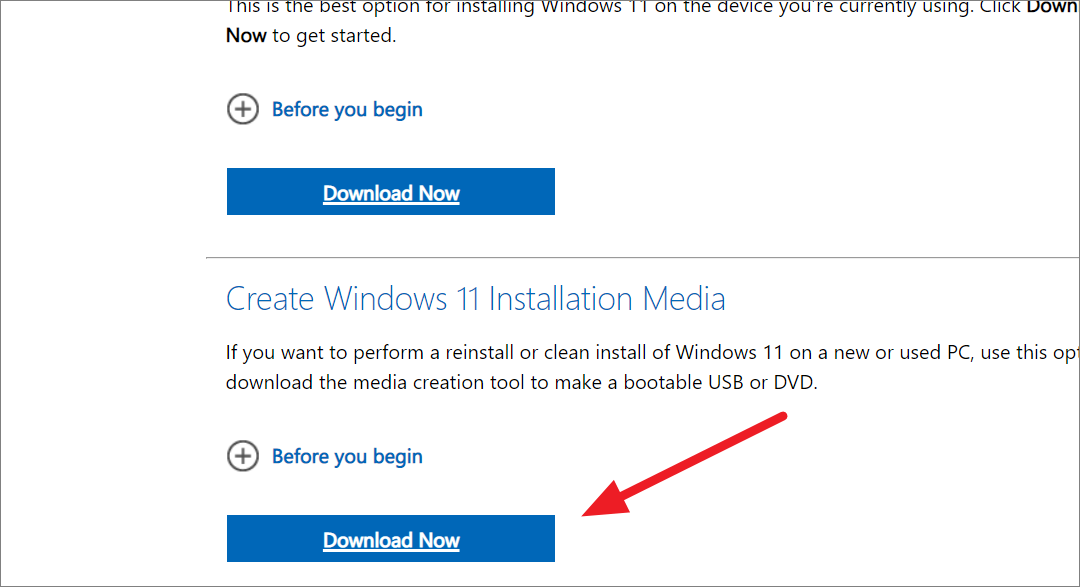
Step 2: Run the downloaded Media Creation Tool (mediacreationtool.exe).
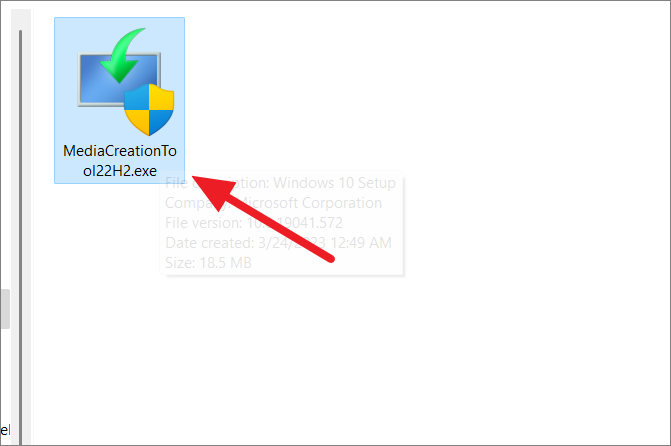
Step 3: Accept the license terms by clicking 'Accept'.
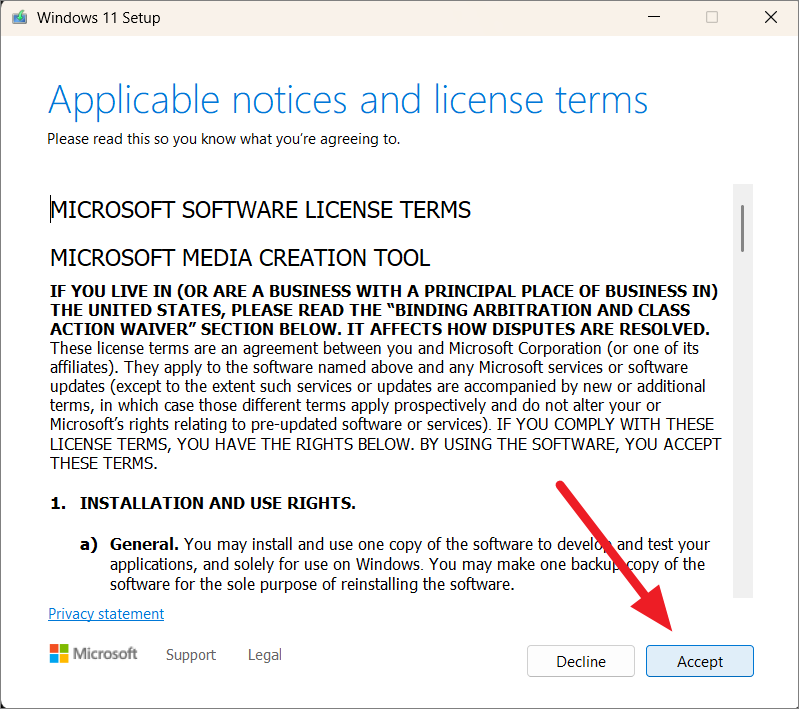
Step 4: Select the language and edition of Windows 11. Uncheck 'Use the recommended options for this PC' if you need to change them. Click 'Next'.
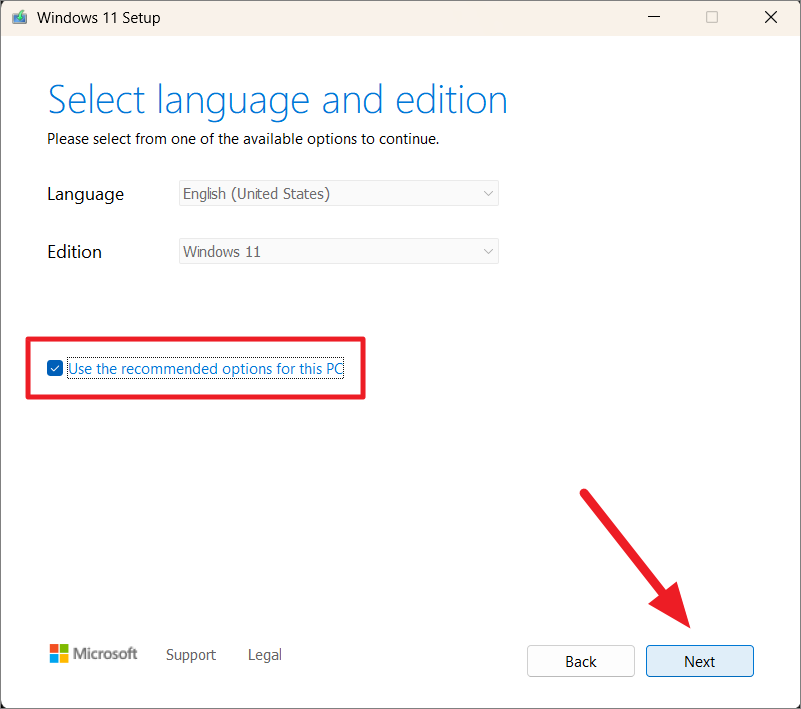
Step 5: Choose 'USB flash drive' or 'ISO file' as your media type. For a USB drive, ensure it has at least 8 GB of space.

Step 6: If selecting 'USB flash drive', choose your USB drive from the list and click 'Next'. This process will erase the drive's contents.
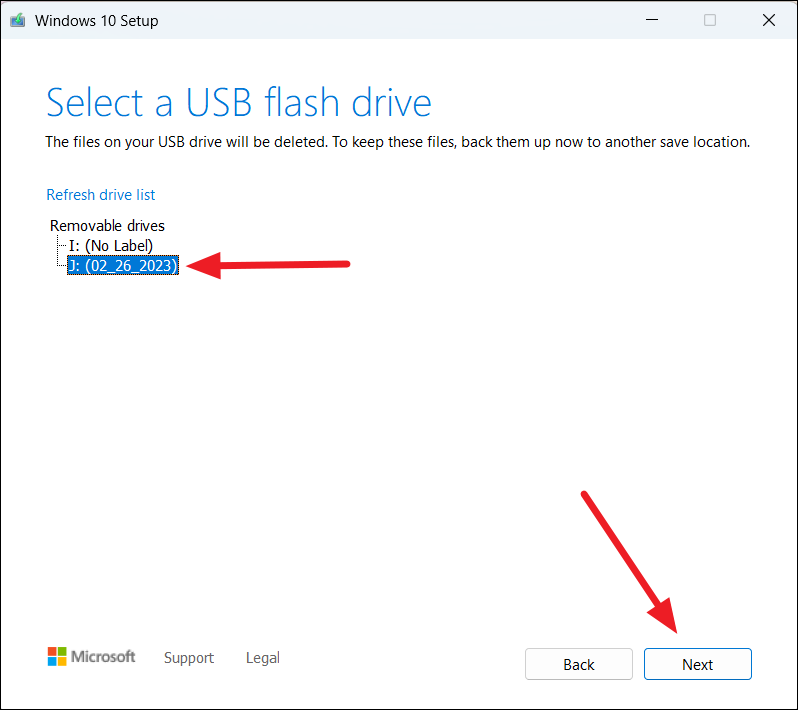
Step 7: Wait for the tool to create the installation media. Once finished, click 'Finish'.
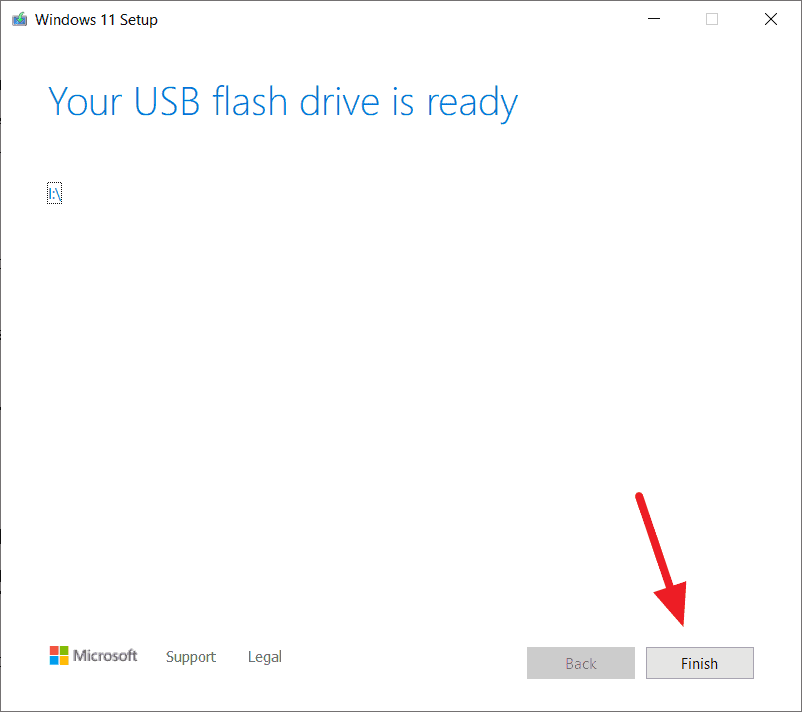
Reinstall Windows using the repair-upgrade method
You can reinstall Windows 11 without deleting your files and applications using the repair-upgrade method. Here's how:
Step 1: Insert the bootable USB drive or DVD into your PC. Open File Explorer, navigate to the installation media, and double-click 'setup.exe' to start the setup.

Step 2: In the Windows Setup window, click 'Change how Setup downloads updates'.

Step 3: Choose 'Not right now' and click 'Next'.
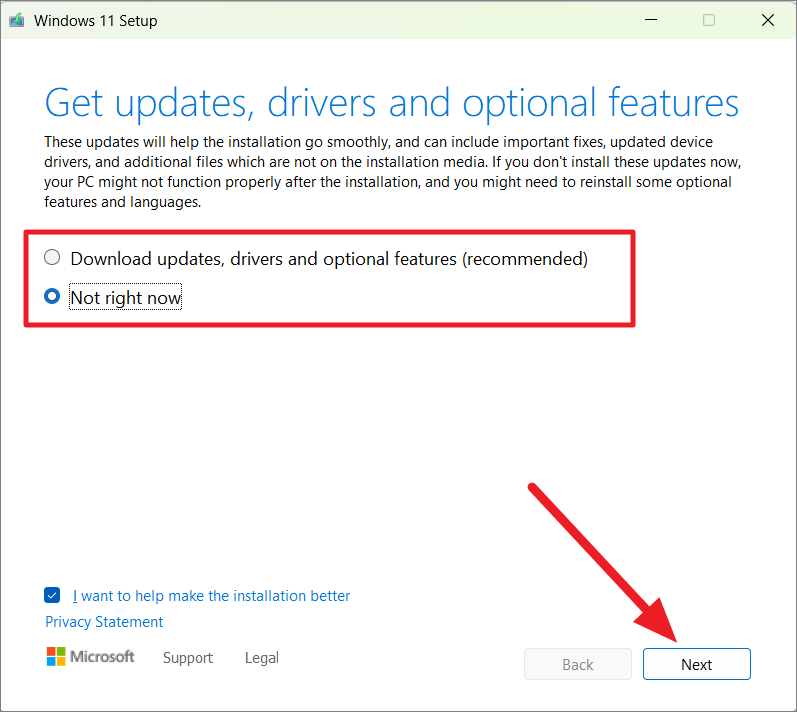
Step 4: Accept the license terms by clicking 'Accept'.

Step 5: Choose what to keep:
- Keep personal files and apps: Retains all your data and installed applications.
- Keep personal files only: Keeps your files but removes apps and settings.
- Nothing: Removes everything for a clean install.
Select 'Nothing' to perform a clean installation and click 'Next'.

Step 6: Click 'Install' to begin reinstalling Windows 11. Your PC will restart multiple times during the process.
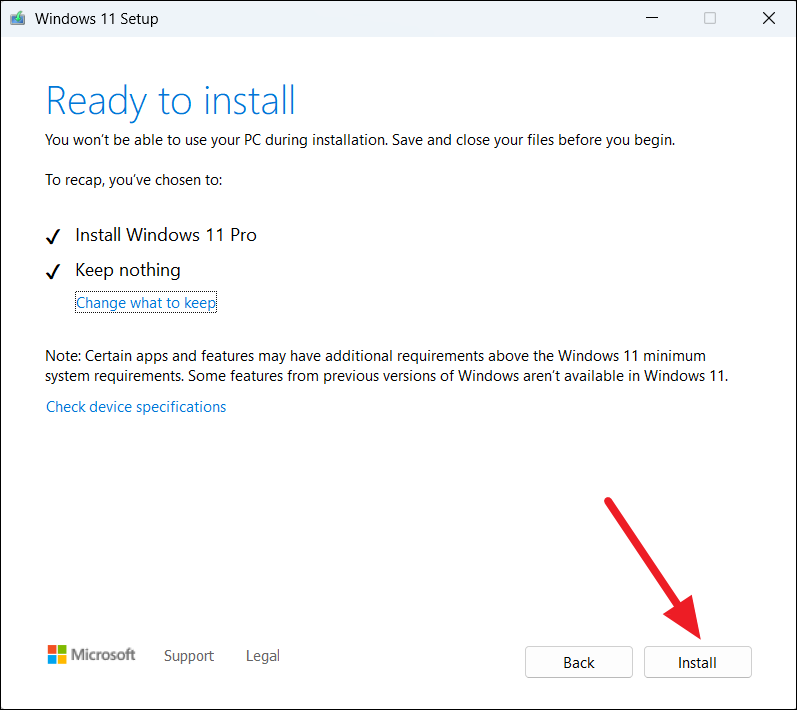
After installation, you'll need to complete the initial setup as previously described.
Clean install Windows using a bootable USB drive or DVD
To perform a clean installation by booting from the installation media, follow these steps:
Step 1: Insert the bootable USB drive or DVD into your computer and restart it.
Step 2: Access the boot menu by pressing the appropriate key during startup (e.g., Esc, F2, F9, F10, or F12), and select the USB drive or DVD as the boot device.
Step 3: The Windows Setup will load. Choose your language, time and currency format, and keyboard layout, then click 'Next'.

Step 4: Click 'Install now'.
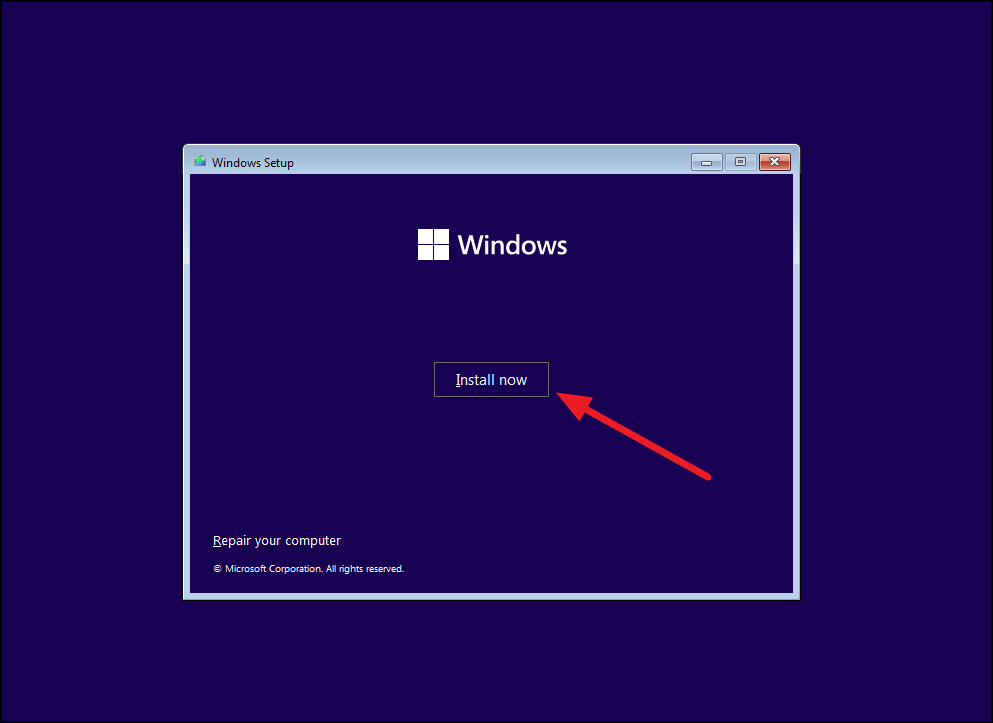
Step 5: If prompted, enter your product key. If you don't have one, click 'I don't have a product key' to proceed.
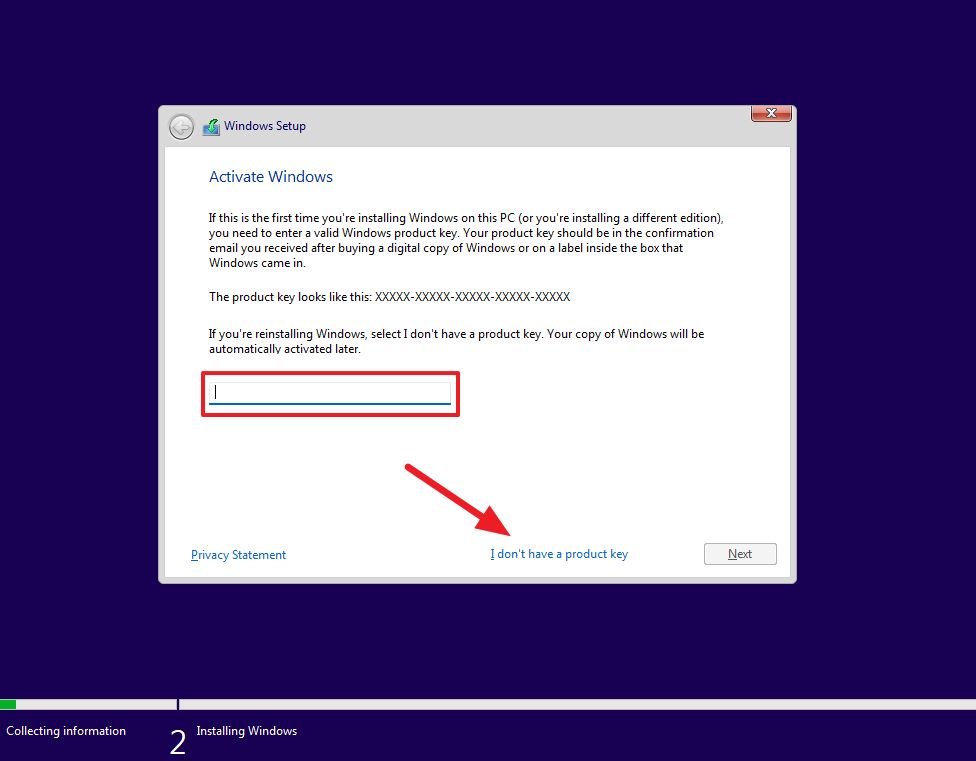
Step 6: Accept the license terms and click 'Next'.
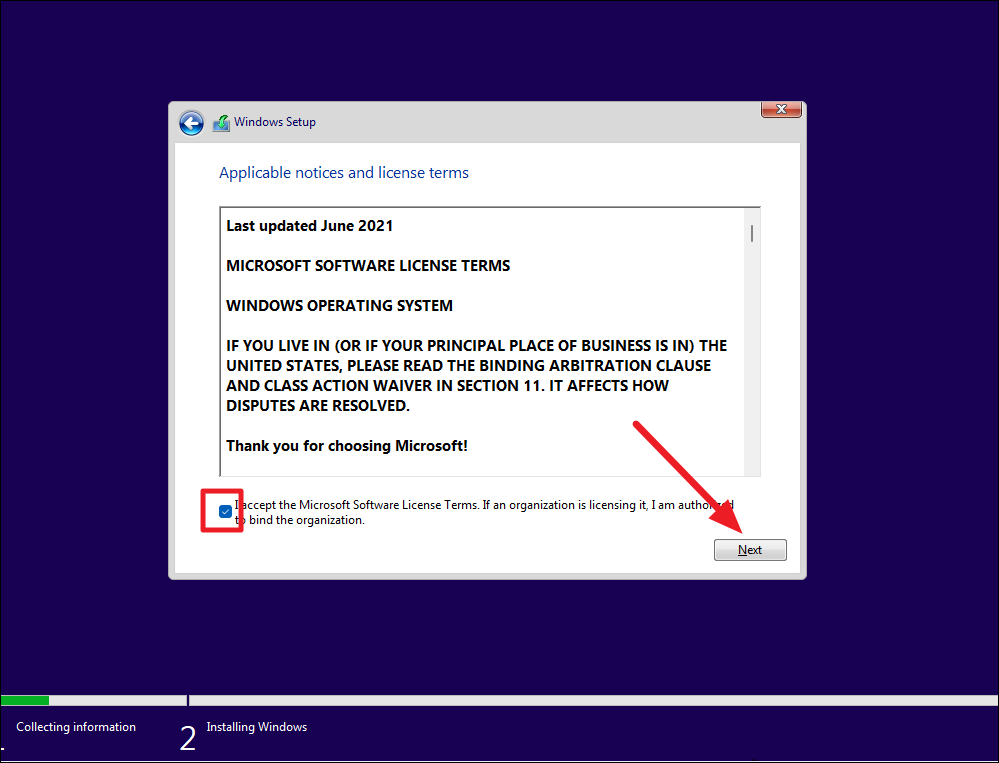
Step 7: Select the edition of Windows 11 you wish to install and click 'Next'.
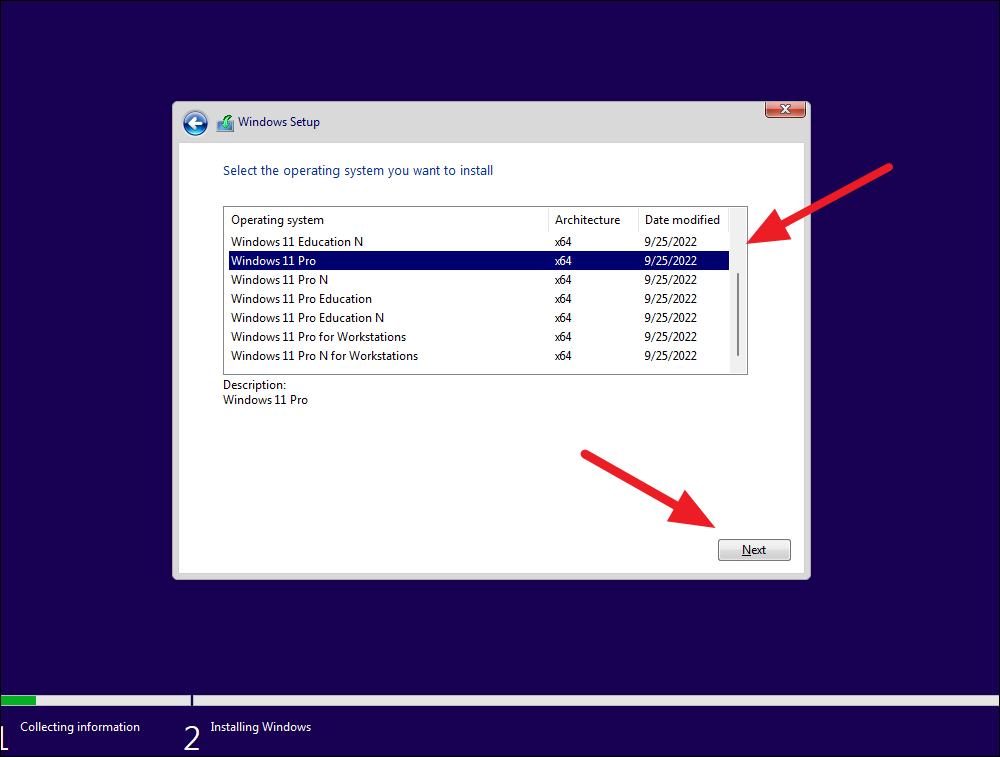
Step 8: Choose 'Custom: Install Windows only (advanced)'.
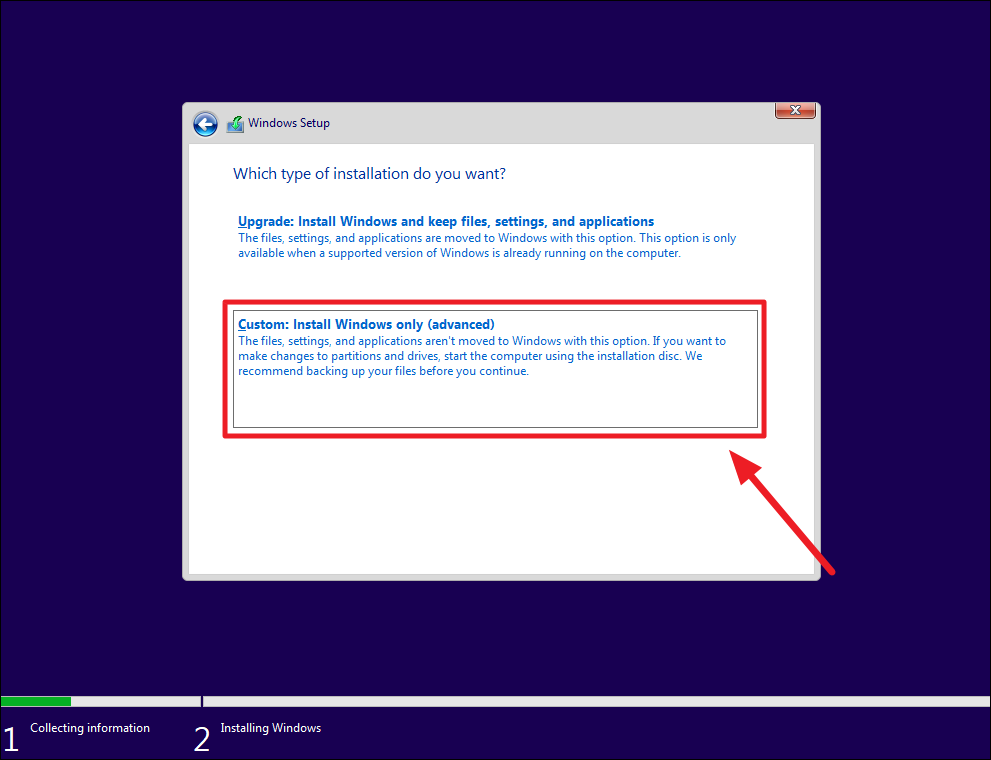
Step 9: Select the drive where you want to install Windows 11. If performing a clean install, you may delete existing partitions for a fresh start (ensure all important data is backed up). Click 'Next' to begin the installation.
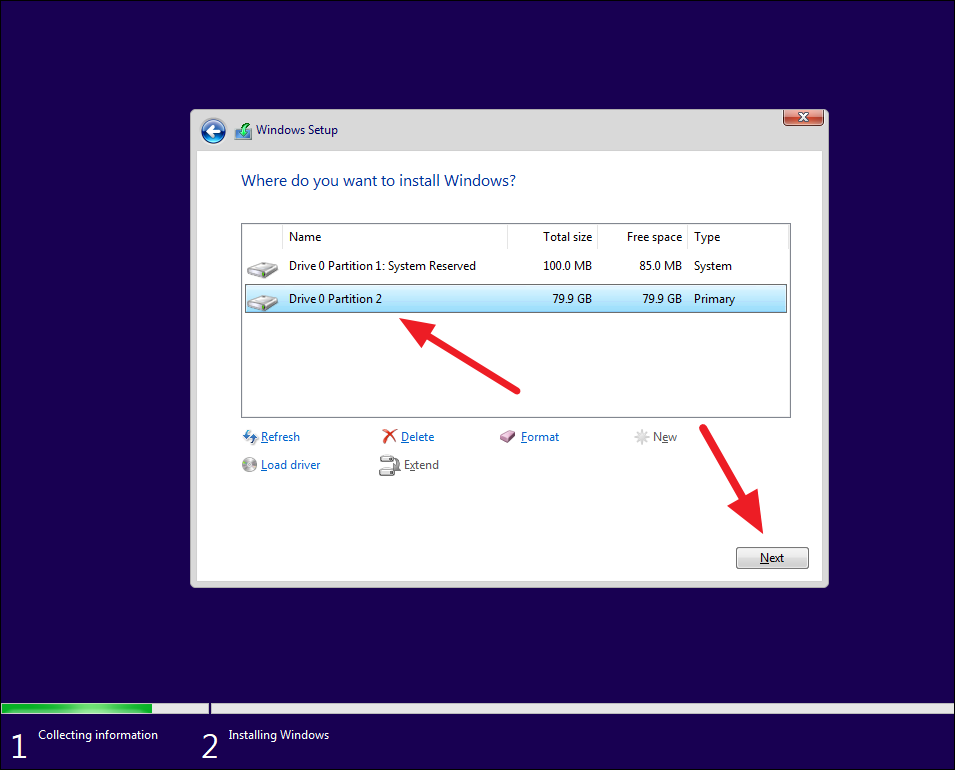
Your computer will start installing Windows 11. Once complete, you'll need to go through the initial setup as previously described.
By following these methods, you can successfully perform a clean installation of Windows 11, ensuring your system runs smoothly and efficiently.

